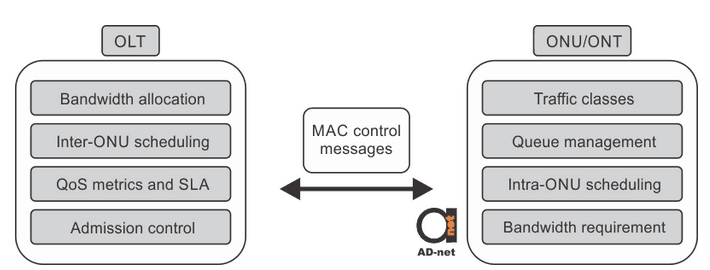Quality of Service is required to support necessary services and applications with required traffic speed. As it has been defined for public switched telephone network (PSTN) already, it just starts to be established for IP traffic of the Internet. Each application that is using network services have different delay, bandwidth, and data loss limit. Service provider is implementing the QoS and constantly measure it to be able to satisfy clients needs. QoS is measuring delay, bandwidth, packet loss rate, and packet arrival time jitter. Using QoS is also beneficial for the service provider since it allows smart transmission resources allocation and distribution. QoS does not increase bandwidth, but it gives higher priority to higher value traffic, such as VoIP.
Table 1. shows the priority for different types of bandwidth. DBA is using also the service level agreement (SLA) values for traffic classification. SLA may specify the max traffic for the different types of bandwidth. Traffic flows should be classified into different classes. Classes are mapped into bandwidth types. Traffic would be transmitted according to the hierarchy of bandwidth types.
Table 1. Bandwidth Types Specified in ITU-T G.983
| Bandwidth Types | Priority | Features | Bandwidth Allocation |
| Fixed | High | Guaranteed and Reserved | SBA |
| Assured | Middle or high | Guaranteed | DBA |
| Nonassured | Middle | Serve when available | DBA |
| Best effort | Low | Serve when available, after nonassured | DBA |
Both OLT and ONT/ONU should make a data transmission scheduling. First ONT/ONU sends request to the OLT for data transmission. OLT is evaluating QoS metrics and SLA and responds with decision. The ONT/ONU is making intro-ONU scheduling arbitrating queues with different priority. Meanwhile OLT performs inter-ONU scheduling arbitrating queues from different ONT/ONUs. Information between OLT and ONT/ONU is transmitted in PON MAC control messages. BPONs major functional blocks for QoS are shown in Figure 1.

Figure 1. QoS provisioning in BPONs


